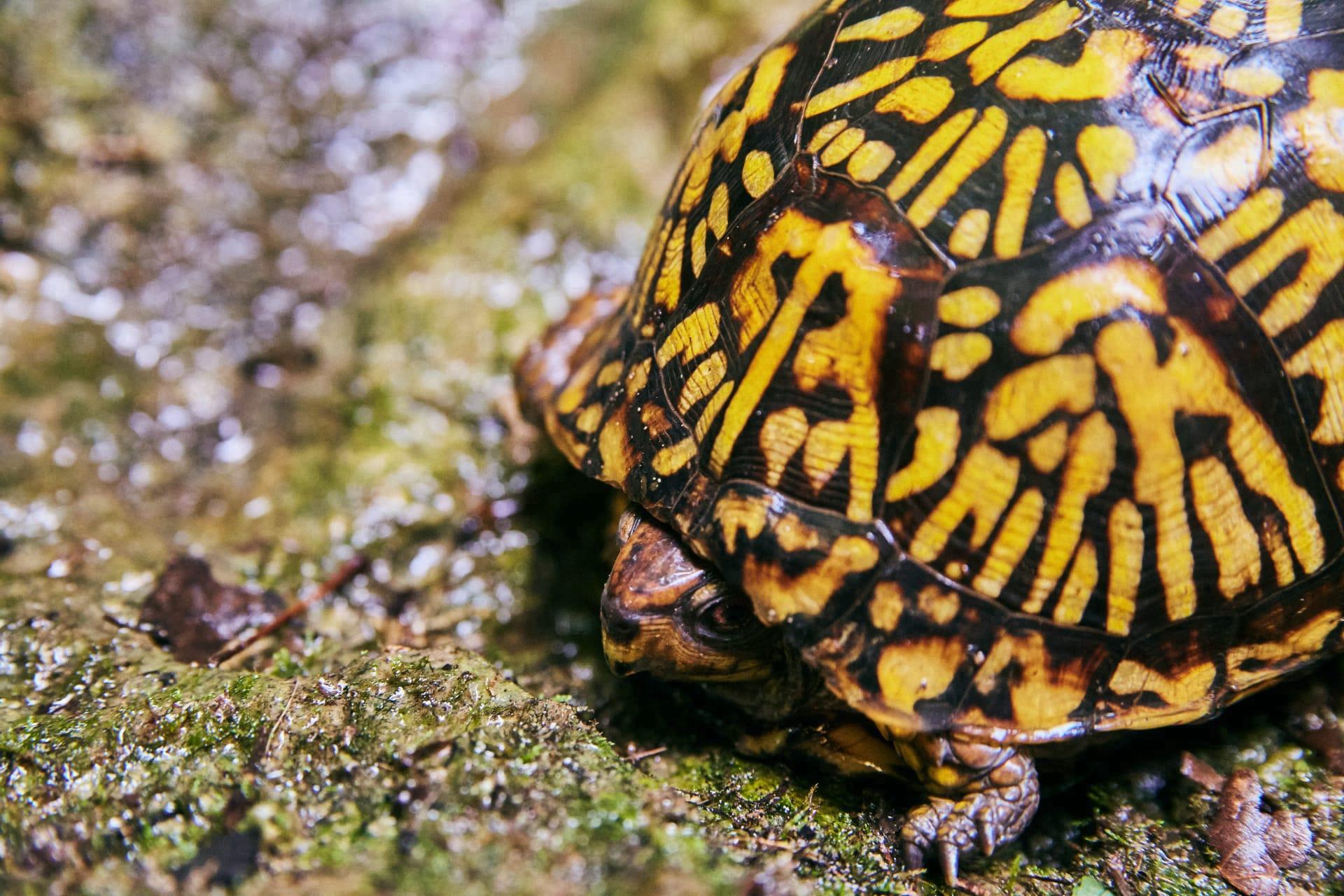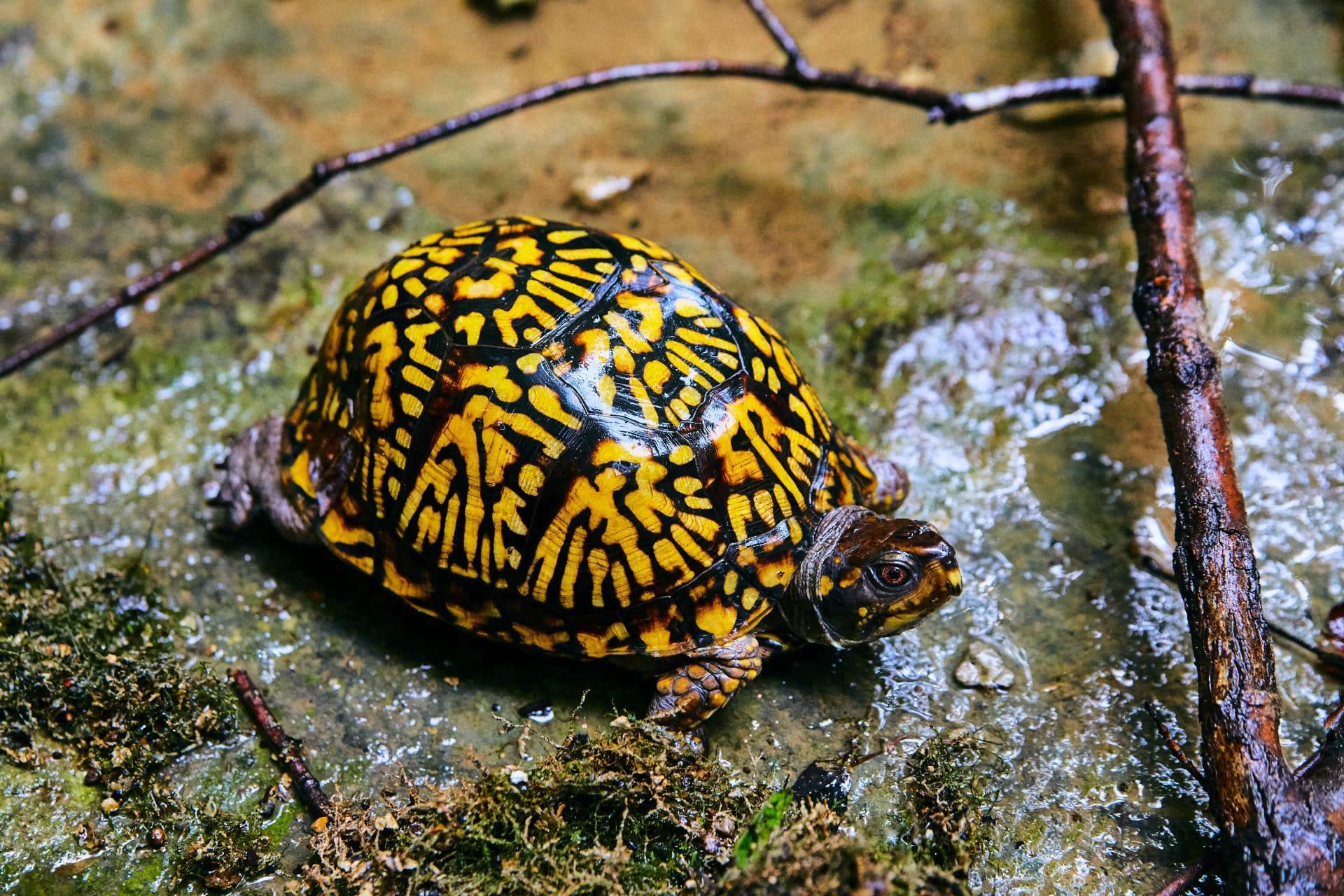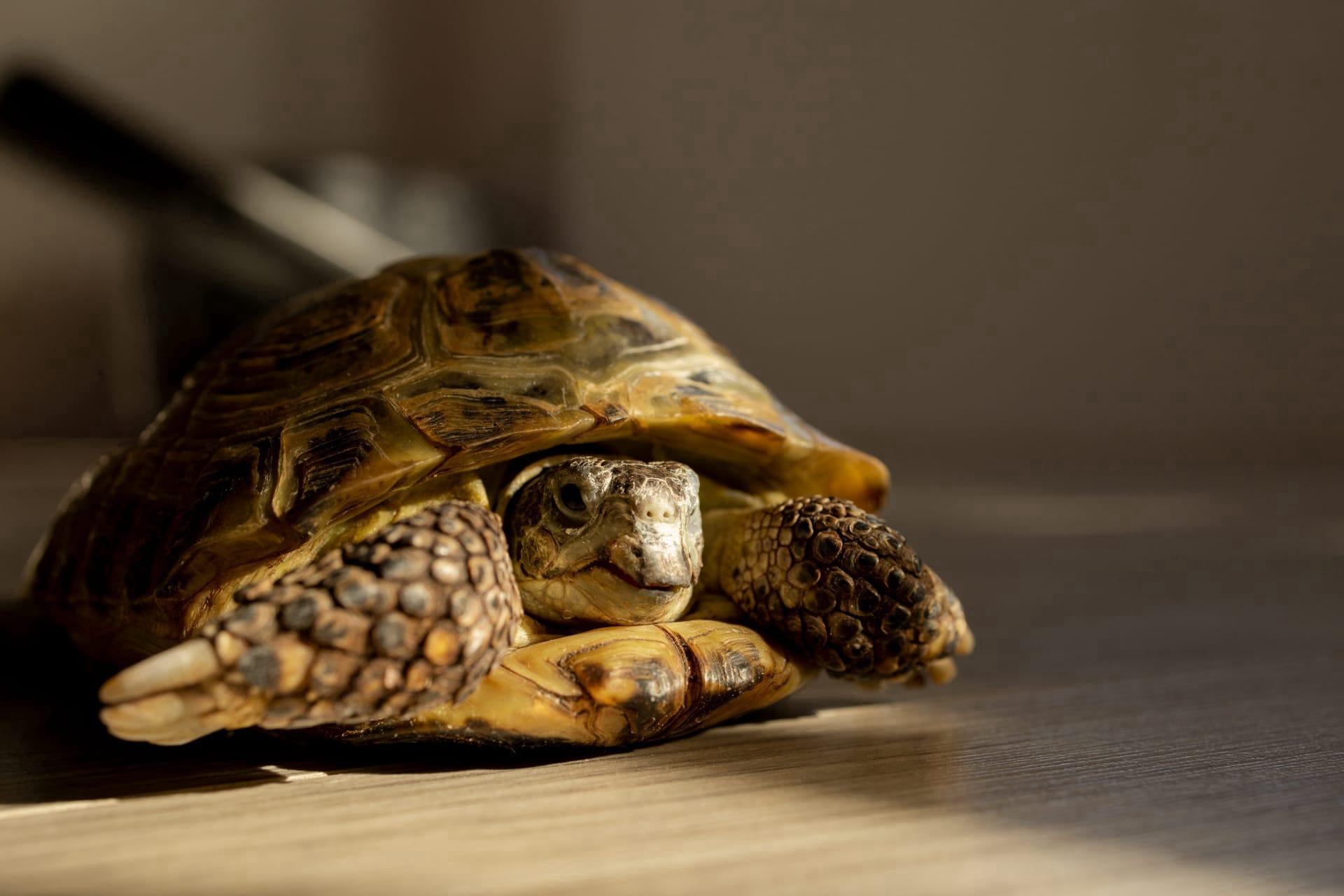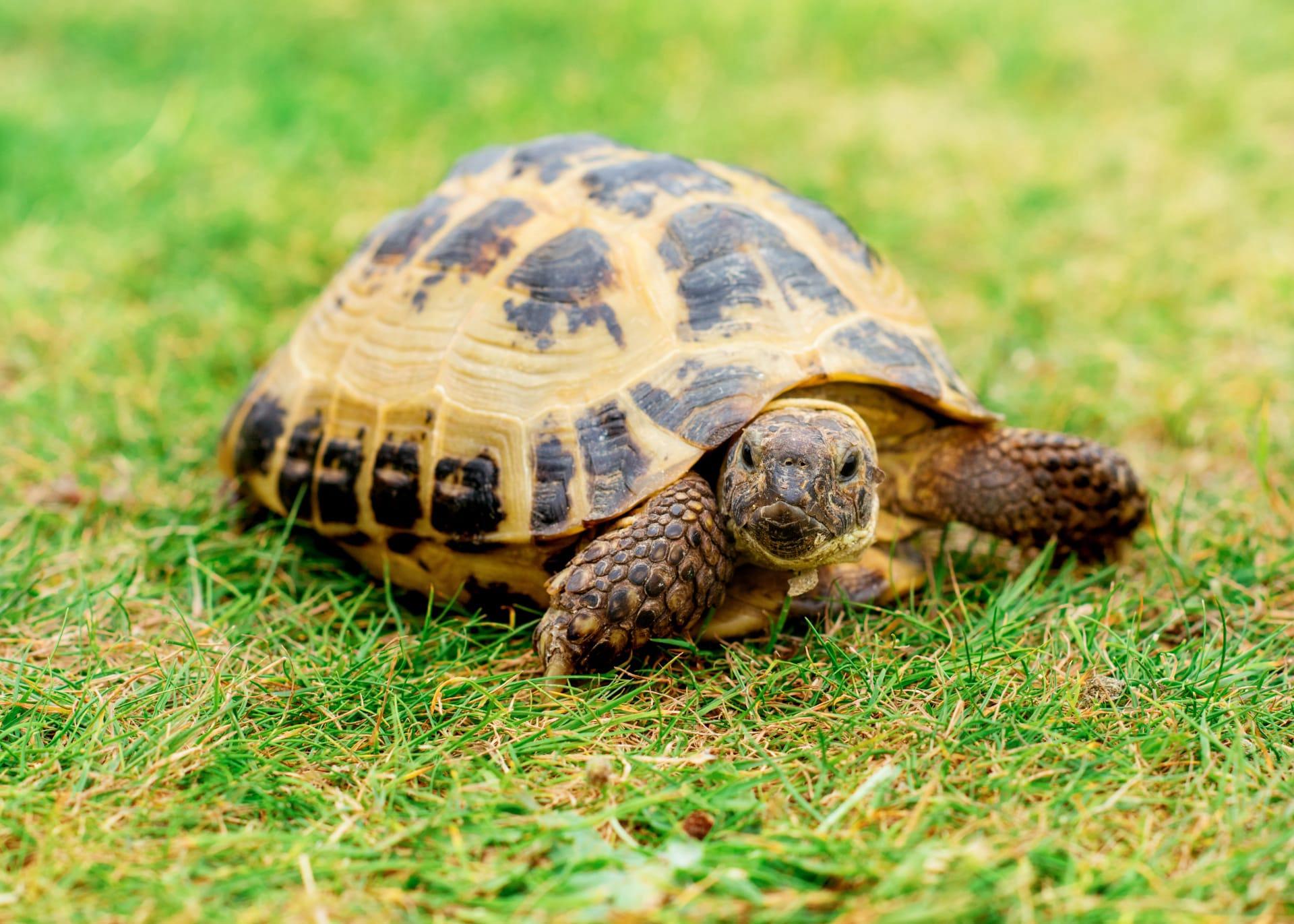Box Tortoise
- Home /
- Mini Encyclopedia /
- Animal /
- Box Tortoise
1
The box turtle, belonging to the genus Terrapene, is a distinct species in the family Emydidae. This group contains several species, notably the Eastern box turtle (Terrapene carolina) and the Western box turtle (Terrapene ornata). These turtles are primarily characterized by their hinged shell, allowing them to retract their head, legs, and tail into the shell and close it tightly for protection.
Box turtles are native to North America, with their distribution extending from the southeastern United States into the Midwest. The Eastern box turtle inhabits regions from Maine to Florida and west to Michigan and Texas, while the Western box turtle is typically found from Indiana to Mexico, across the Great Plains. Their habitats range from moist forest areas to dry grasslands, showcasing their adaptability to diverse environments.

2
Question: Do box turtles spend most of their life in water like other turtles?
Answer: Contrary to popular belief, box turtles are predominantly terrestrial and spend most of their life on land. Unlike aquatic turtles, box turtles have a dome-shaped shell and sturdy, elephant-like hind legs adapted for walking on the ground. They do enjoy occasional dips in shallow water, mainly for hydration and cooling, but they are not adapted for prolonged aquatic living. This misconception likely arises from a generalization of turtle habits, not considering the significant ecological variations within the turtle family.

3
Box turtles have developed unique survival strategies to thrive in their environments. One key adaptation is their hinged shell, which allows them to completely enclose themselves for defense against predators. Additionally, they have a varied diet, consuming fruits, vegetables, fungi, and invertebrates, demonstrating their omnivorous nature. This dietary flexibility helps them adapt to changing food availability.
Seasonally, box turtles exhibit behavioral changes. In winter, they hibernate in burrows to escape the cold, entering a state of reduced metabolic activity. During the warmer months, they are more active, seeking mates and foraging for food. Their ability to withstand different climatic conditions and dietary changes makes them resilient in their natural habitat.

4
In the ecosystem, box turtles play significant roles. As part of the food chain, they contribute to controlling insect and pest populations, given their diet includes various invertebrates. This natural pest control is beneficial for maintaining the ecological balance in their habitats.
Furthermore, box turtles act as seed dispersers. The fruits they consume often pass through their digestive system intact, allowing seeds to be deposited in different locations. This process aids in the propagation of several plant species, enhancing biodiversity in their ecosystems. The survival of box turtles is thus crucial for the health and stability of their native habitats.

5
Film: "The Secret Life of Turtles" is a documentary produced in the United States in 2018. It explores the hidden world of various turtle species, including a segment on box turtles. The film showcases their unique behaviors, survival strategies, and challenges they face in the wild, offering viewers a deeper understanding of these fascinating creatures.
Book: "Box Turtles: A Complete Guide to Terrapene and Cuora" by Tess Cook, published in the USA in 2015, offers an in-depth look into the world of box turtles. This book covers everything from their natural history, behavior, and care requirements, making it an essential guide for both enthusiasts and researchers.
Book: "The Box Turtle Manual" authored by Philippe de Vosjoli and Roger Klingenberg, released in the United States in 2003, provides comprehensive information on the care, breeding, and conservation of box turtles. It serves as a valuable resource for pet owners and conservationists alike, blending practical advice with insights into the ecological importance of these species.